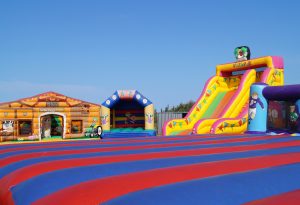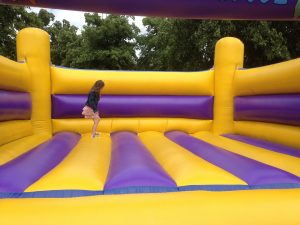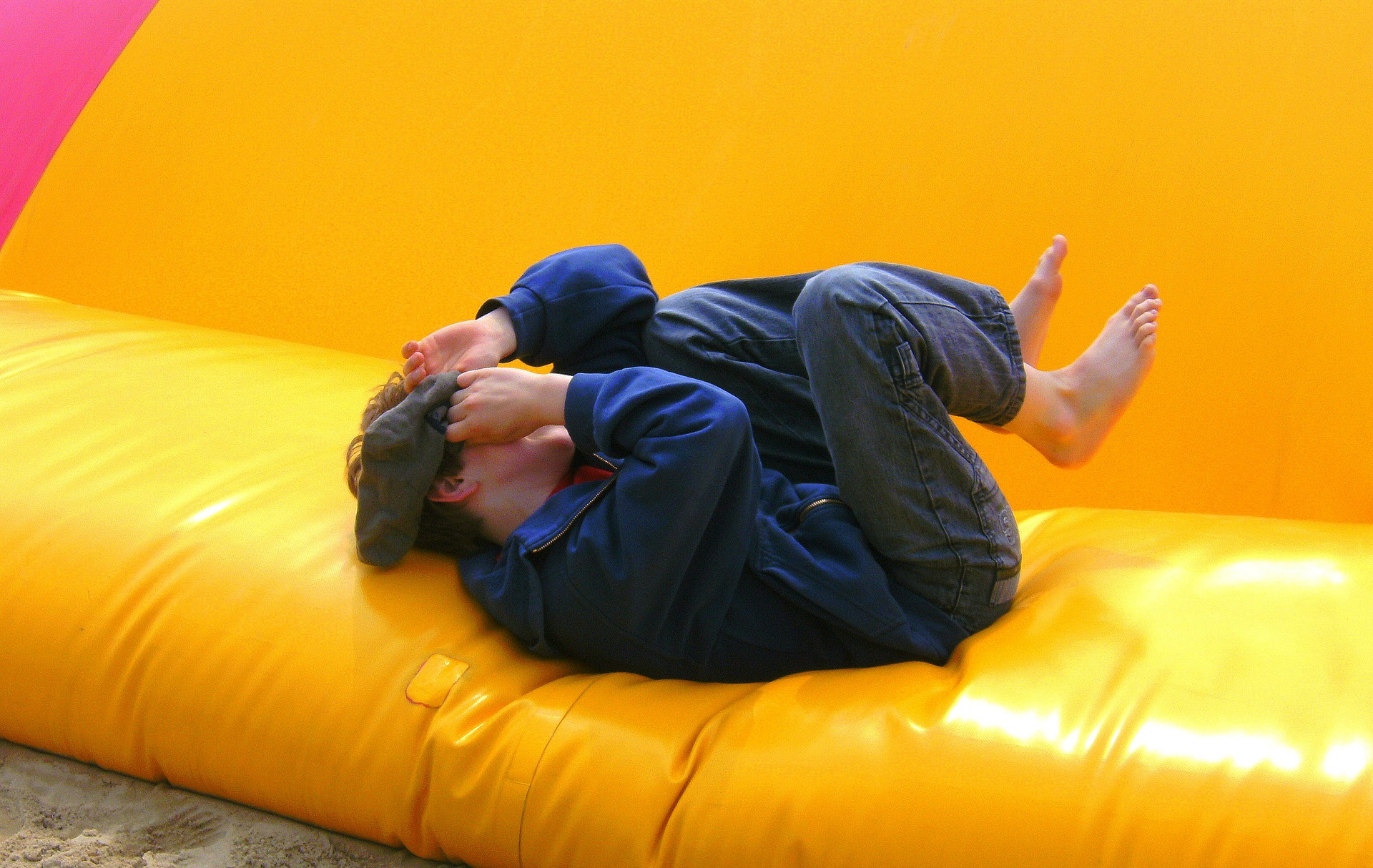Operating Sealed inflatables, for example a bouncy castle.
The operator has overall responsibility to make sure that the sealed inflatable is located well away from possible hazards, such as overhead powerlines or other obstacles with hazardous projections (such as fences).
If the ground surface is abrasive, oily or dirty, a ground sheet
should be used to prevent wear and tear of the base material. Before siting the inflatable, you must make a close visual inspection of the base area to make sure that any discarded objects or other debris are removed, minimising the potential for tears or piercing of the sealed inflatable.

The person or people filling the sealed inflatable must remain in attendance at all times during set-up. The power source (ie blower fan or compressor) must always be physically disconnected from the sealed inflatable once inflation pressure has been reached. This will ensure that the risks from inadvertent energisation or continuing to fill/overfill the sealed inflatable are minimised.
The operator should take regular measurements of the internal pressure using a suitable pressure-measuring device to ensure that the internal pressure remains within the maximum and minimum operating range specified by the manufacturer in the operations manual.
An increase in the internal temperature of the air within the inflatable could result in an internal increase in pressure. The colour of the inflatable can play a part in any temperature rise, with dark colours absorbing a lot more heat than lighter ones because they absorb more light energy.
The operator should consider whether they need to take additional pressure measurements on hot days and, if necessary, adjust the internal pressure to the level stipulated in the operations manual.
Operating the inflatable outside
When the inflatable is being operated outside, the operator should use a suitable hand-held anemometer to measure the wind conditions at regular intervals.
The operator should visually check for changes in wind direction (eg by looking at how the trees are swaying) to make sure readings are taken in the direction of the wind. If an anemometer is not available, the inflatable should not be operated outside.
Smartphone weather applications are not suitable to assess wind speed as they do not take localised wind conditions into account.
Sealed inflatables should not be used when the wind, or gusts, are in excess of the maximum safe wind speed specified by the manufacturer. This information should be stated clearly both on the inflatable device and in the operations manual.
Safe use of the inflatable
The operator is responsible for the safe use of the sealed inflatable throughout the day-to-day availability of the device to the public. Where appropriate, the operator should make sure that:
- there is constant supervision by a suitably trained person. This would normally mean at least one person per item of equipment
- written safe operating instructions are always available with the inflatable
- the number of users on the inflatable at the same time does not exceed the maximum number specified by the manufacturer
- users of the inflatable do not exceed the height limit and bigger users are kept separated from smaller ones
- users can get on and off safely, with suitable safety matting at the entrance that complies with the requirements set out in BS EN 1177
- users remove shoes and glasses and empty their pockets of all sharp or dangerous items
- anyone obviously intoxicated is not allowed on
- users do not climb or hang from the walls
- regular checks are made to ensure that anchor points remain secure at all times
 The operator should make sure that the inflatable is operated according to the instructions in the operator’s manual, and that they comply with any operational limitations.
The operator should make sure that the inflatable is operated according to the instructions in the operator’s manual, and that they comply with any operational limitations.Contains public sector information published by the Health and Safety Executive and licensed under the Open Government Licence’.

